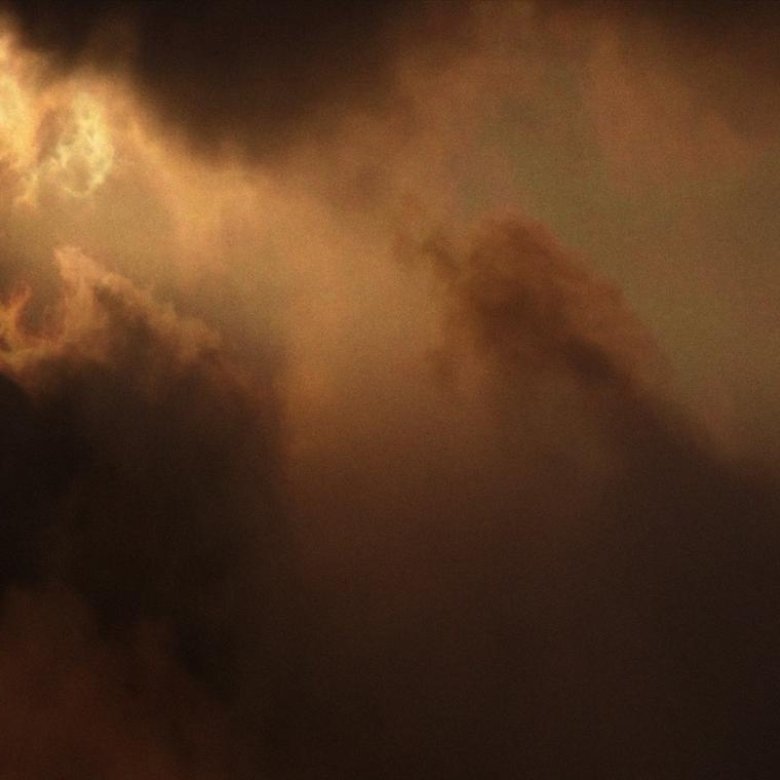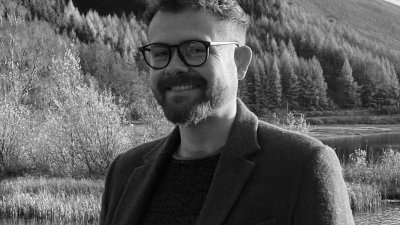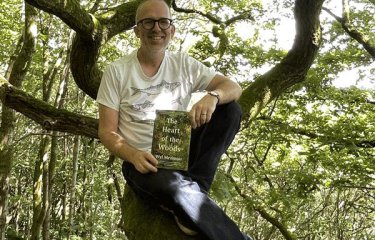Filmmaker Scott Barley: On the shape-shifting history of cinema
25 October 2024

Photo credit: Scott Barley
This article was written by Research Associate, Scott Barley.
From its earliest beginnings and throughout its history, cinema — more than any other art form — has been a consequence of the convergence of art and technology. Since celluloid purred through the gate of the Lumière cinématographe and audiences first experienced the scintillation of images of Workers Leaving the Factory, cinema has been met with as much curiosity and wonder as it has suspicion and trepidation.
In the years that have followed, cinema has been repeatedly plagued by premature obituaries, derided by some impetuous and arguably self-serving critics — filmmakers among them — each time it has reinvented itself with the advent of new technologies: silent to sound, monochrome to colour and, more recently, analogue to digital.
As an artist-filmmaker and cinephile, much of what I find so beguiling and mysterious about cinema is its history. A liminal history of shedding its skin, of shape-shifting, its capacity for transformation. Besides the technological advancements over the past 130 years, cinema has been shaped and re-shaped by myriad movements, collectives, and singular artists who have found multifarious ways of deconstructing and reconstructing the medium’s form.
One could make the argument that the origins of cinema precede the Lumière invention. Eadweard Muybridge's pioneering work in chronophotography and his zoopraxiscope - a predecessor of the film projector - could be considered early forms of cinema. More radically, avant-garde filmmaker Jerome Hiler has suggested that cinema’s roots can be traced to before the 1300s, with the transformative interplay of light in medieval stained-glass windows, creating an illusion of multiplicity; making “many windows out of one.” This dynamic visual experience — shifting with time and weather — anticipates cinema’s essence: movement, temporality, and storytelling through light.
All this is to say that inherent to cinema's nature is its ability to metamorphose with technological advancements. The tension between tradition and innovation is cinema’s double helix. It embodies a will to be born anew and proliferate its possibilities.
Just as these earlier technologies prefigured the invention and reinventions of cinema, artificial intelligence now heralds a transformation of a different kind — one not simply of form or medium, but of creative agency itself.
While stained glass and cameras invited interaction with nature’s changing light, AI shifts this interaction toward mediation through algorithms and code. Cinema has demonstrated remarkable adaptability throughout its history, but the current AI revolution presents unprecedented challenges. The zeitgeist feels fundamentally different. This not an expansion of the familiar, but a rupture.
The last few years since the advent of AI becoming mainstream has seen frenzied escalation. Beyond the initial novelty, we are now at a precipice, where multitudes of unknowns lie before us. The integration of artificial intelligence into the creative sector presents a complex paradigm shift for contemporary filmmakers, and all those within the industry, fundamentally challenging traditional notions of authorship, authenticity, and artistic expression. The concerns surrounding artificial intelligence are not capricious or reactionary; this time, there is genuine consternation.
Where earlier technological innovations like sound and colour extended filmmakers’ palettes, AI not only alters the tools but also challenges the indispensable question of who (or what) is behind the creative act. Digital cameras empowered filmmakers to capture images less expensively, and experiment with significantly less risk. Some risk remains, of course, and the tensions that arise from risk and limitations are vital to the creative act. However, AI can generate entire narratives, images, and scenes without human intervention, effectively eliminating the risk traditionally associated with artistic creation. This shift severs the traditional connection between art and its creator, potentially leading to a homogenisation of creative expression.
A film created by AI-generated scripts or entire scenes, as seen in tools like Runway ML, lacks a direct human voice, potentially reducing the filmmaker from creator to curator or, worse, bypassing them entirely. The rise of AI-driven tools like DeepBrain AI, which can convincingly recreate actors’ voices and facial expressions, poses a direct threat to the livelihood of actors. Similarly, editors who traditionally have been hired for their skillset are at risk of being supplanted by AI systems like Adobe’s Sensei, which uses machine learning to suggest edits, transitions, and pacing automatically.
Some leading AI developers, backed by multi-trillion dollar corporations and private donors, are embracing what can only be described as a techno-feudalist model, where control over creative technologies is increasingly centralised. This monopolisation mirrors a modern form of feudalism, where artists are left reliant on corporate-controlled tools. Accelerationist impulses further entrench the legitimate concerns, as the rush to develop new AI technologies often prioritises efficiency and “progress” over well-considered and ethical implementation. In the past few years, millions of artists’ work has already been data harvested.
After much consideration, and as a filmmaker and artist, I believe the best way to address and hopefully mitigate my own concerns — and those of many others — is not by deriding AI from the sidelines, as has often happened with previous technological advancements. I’ve been working as a research associate together with Dr Rachael Jones and Principal Investigator Dr Kingsley Marshall for Falmouth on the Charismatic project since April 2024, as part of a larger team of filmmakers, academics, and technologists. We aim to ethically and judiciously facilitate the creation of bespoke tools for in-house development of intellectual properties, that augment creative professionals’ workflows instead of replacing them.
The act of writing, even before it is read, is a conversation. Writing is thinking: a dialogue with one’s own thoughts. As I write these reflections, I recall a quote by Anaïs Nin: “We don’t see things as they are; we see them as we are.”
Nin succinctly captures the fundamentals of human perception and creativity. AI cannot replace our unique ways of seeing and experiencing the world, and there is infinite value in the diversity of our voices. AI, devoid of lived experience, cannot express or create with phenomenological nuance, as it has no lived experience in navigating the world.
Pandora’s box has been opened, and AI is here to stay, fundamentally reshaping the landscape of creativity. This moment presents a unique opportunity for greater innovation, collaboration, and democratisation in an industry that has historically been elitist. It compels us to advocate for augmentation rather than replacement—ensuring that AI remains a choice, another tool in our arsenal.
To advocate for bespoke tools that leverage AI to enhance our capabilities while safeguarding the unique human qualities and artistic visions that imbue our work with soul is essential. By embracing a synergy—where ethical technology and creativity successfully coalesce—we can open doors to new artistic possibilities, ensuring that our creative spirit continues to thrive, and is never diminished.
About Scott
Scott Barley is an artist-filmmaker based in Scotland. His work is primarily concerned with the anthropocene, nature, darkness, absence, cosmology, phenomenology, and mysticism.
He has exhibited at film festivals and art galleries worldwide, including ICA London, Jeu de Paume Paris, Doclisboa, Karlovy Vary IFF, Venice Biennale, QAGOMA, MoMA Río de Janeiro, and MoCA Busan.
Barley has taught Film, Television and Visual Arts internationally from foundation to doctorate levels, including at Winchester School of Art, Karlsruhe University of Arts and Design, University of Chile, and Centre for Visual Communications Belgrade. He has worked at Falmouth University as an Associate Lecturer in Film and Television since 2020, and as a Research Associate within the Sound/Image Cinema Lab since 2024.





